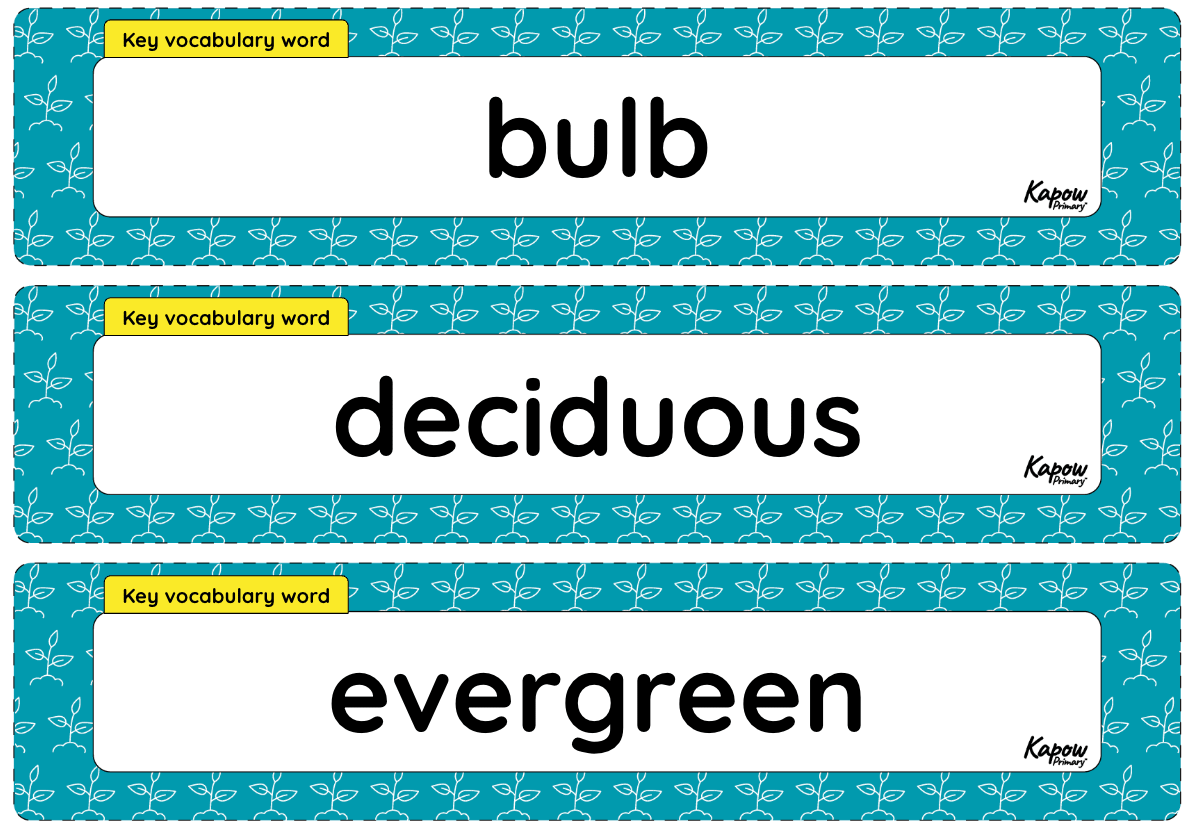Introduction to plants
Identifying and naming a variety of plants and investigating if beans need water for growth.
- Subjects >
- Science >
- Key stage 1 >
- Year 1 >
-
Plants: Introduction to plants
Unit outcomes
Pupils who are secure will be able to:
- Identify plants and their features.
- Recall some of the roles that flowering plant parts have.
- Name some trees and their parts.
- Identify similarities and differences between deciduous and evergreen leaves.
- Recall that seeds and bulbs come from plants.
- Recognise that seeds need water for growth.
When working scientifically, pupils who are secure will be able to:
- Raise questions about plants and respond to suggestions on how to set up an investigation to answer a question.
- Use a magnifying glass to observe the different parts of flowering plants.
- Draw and label a diagram of a flowering plant.
- Use an identification chart to name flowering plants.
- Sort plants into groups based on specific criteria.
- Use non-standard units to measure leaf length.
- Recognise similarities and differences in seeds and bulbs.
- Recognise that predictions do not always match observations.
- Identify which plant parts can be eaten.
- Recognise that scientific research into plants leads to important discoveries.
Please note that Kapow Primary Science lessons are designed to be 1 hour and 30 minutes long to reflect the requirements of a core subject.
Note: At the end of this unit, observe seasonal changes in summer. Allow the pupils to complete the Activity: Observing seasons over time (see Science, Year 1, Seasonal changes, Lesson 5: Observing over time).
Suggested prior learning
Forces and space: Seasonal changes
Get startedLessons
Lesson 1: What is a plant?
Knowledge
- To identify plants in the school grounds.
Working scientifically
- To plan an investigation.
Lesson 2: Parts of a plant
Knowledge
- To identify parts of a flowering plant.
Working scientifically
- To draw and label a diagram.
Lesson 3: Wild and garden plants
Knowledge
- To identify and name wild and garden plants.
Working scientifically
- To sort flowers into groups.
Lesson 4: Deciduous and evergreen trees
Knowledge
- To identify and name deciduous and evergreen trees.
Working scientifically
- To measure and compare leaves.
Lesson 5: Sorting seeds
Knowledge
- To recognise that new plants come from seeds and bulbs.
Working scientifically
- To recognise that observations do not always match predictions.
Lesson 6: Which plant parts can you eat?
Science in action
- To recognise the importance of a scientist’s role.
Working scientifically
- To use observations to find answers to questions.
Key skills
Related content
Unit resources

Knowledge organiser – Science Y1: Introduction to plants
Aimed at pupils, a single page which gives key facts and definitions from the unit 'Introduction to plants'.

Vocabulary display – Science Y1: Introduction to plants
A display version of the vocabulary for the unit 'Introduction to plants'.
Cross-curricular opportunities
English: Composing sentences before writing; punctuating sentences with capital letters and full stops.
Maths: Comparing and measuring leaf lengths.
Art: Drawing flowering plants.
Computing: Using devices to capture images and video.
Music: Listening to and joining in with songs.
Geography: Carrying out fieldwork on the school grounds.
History: Recognising the significance of scientists in the past.
British values: Mutual respect.

